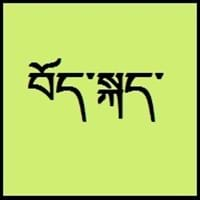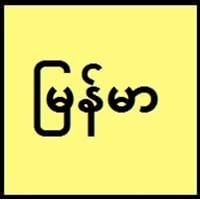Countries
China, Nepal
Myanmar
National Language
Nepal, Tibet
Myanmar
Second Language
Not spoken in any of the countries
Bangladesh, Burma
Speaking Continents
Asia
Asia
Minority Language
China, India, Nepal
Mon
Regulated By
Committee for the Standardisation of the Tibetan Language
Myanmar Language Commission
Interesting Facts
- Tibetan dialects vary alot, so it's difficult for tibetans to understand each other if they are not from same area.
- Tibetan is tonal with six tones in all: short low, long low, high falling, low falling, short high, long high.
- The naming of people in Burmese is strange. There is no last name, often name is rhymed such as Ming Ming, Mo Mo or Jo Jo.
- It appears as odd language to many people because it has peculiar pitch register, tonal form as language.
Similar To
Not Available
Thai Language
Derived From
Not Available
Pali Language
Alphabets in
Tibetan-Alphabets.jpg#200
Burmese-Alphabets.jpg#200
Scripts
Tibetan alphabet, Tibetan Braille
Tangut
Writing Direction
Left-To-Right, Horizontal
Left-To-Right, Horizontal
Hello
བཀྲ་ཤིས་བདེ་ལེགས། (tashi delek)
မင်္ဂလာပါ (maingalarpar)
Thank You
ཐུགས་རྗེ་ཆེ་། (tujay-chay)
ကျေးဇူးတင်ပါသည် (kyaayyjuutainparsai)
How Are You?
ཁྱེད་རང་སྐུ་གཇུགས་བདེ་པོ་ཡིན་པས།
(kayrang kusu debo yimbay?)
နေကောင်းလား? (naykaungglarr?)
Good Night
གཟིམ་ལཇག་གནང་དགོས་། (sim-jah nahng-go)
ကောင်းသောညပါ (kaunggsawnyapar)
Good Evening
དགོང་དྲོ་བདེ་ལེགས།
မင်္ဂလာညနေခင်းပါ (main g lar nyanayhkainn par)
Good Afternoon
ཉིན་གུང་བདེ་ལེགས།
မင်္ဂလာနေ့လည်ခင်းပါ (main g lar naelaihkainn par)
Good Morning
སྔ་དྲོ་བདེ་ལེགས། (nga-to delek)
မင်္ဂလာနံနက်ခင်းပါ (main g lar nannaathkainnpar)
Please
thu-je zig / ku-chee.
ကျေးဇူးပြု (kyaayyjuupyu)
Sorry
ཀོང་དགས་། (gawn-da)
တောင်းပန်ပါတယ် (taunggpaanpartaal)
Bye
ག་ལེར་ཕེབས་། (kha-leh phe)
နုတ်ဆက်ပါတယ် (notesaatpartaal)
I Love You
ང་ཁྱེད་རང་ལ་དགའ་པོ་ཡོད་ (nga kayrâng-la gawpo yö)
မင်းကိုချစ်တယ် (mainnkohkyittaal)
Excuse Me
དགོངས་དག བཟོད་དུ་གསོལ། ཐུགས་རྗེ་གཟིགས།
ဆင်ခြေဆင်လက် ငါ့ကိုအ (Sainhkyaysainlaat ngarko a)
Dialect 1
Central Tibetan
Arakanese
Where They Speak
China, India, Nepal
Bangladesh, India, Myanmar
Dialect 2
Khams Tibetan
Tavoyan
Where They Speak
Bhutan, China
Myanmar
Dialect 3
Amdo Tibetan
Intha
Where They Speak
China
Burma
Speaking Population
Not Available
Second Language Speakers
Not Available
Native Name
བོད་སྐད་ (pö-gay)
ဗမာစကား (bama saka)
Alternative Names
Bhotia, Dbus, Dbusgtsang, Phoke, Tibetan, U, Wei, Weizang, Zang
Bama, Bamachaka, Myanmar, Myen, myanma bhasa
French Name
tibétain
birman
German Name
Tibetisch
Birmanisch
Pronunciation
Not Available
Not Available
Ethnicity
tibetan people
Bamar people
Language Family
Sino-Tibetan Family
Sino-Tibetan Family
Subgroup
Tibeto-Burman
Tibeto-Burman
Branch
Not Available
Not Available
Early Forms
Old Tibetan, Classical Tibetan
Old Burmese, Middle Burmese, Burmese
Standard Forms
Standard Tibetan
Modern Burmese
Language Position
Not Available
Signed Forms
Tibetan Sign Language
Burmese sign language
Scope
Not Available
Individual
ISO 639 6
Not Available
Not Available
Glottocode
tibe1272
sout3159
Linguasphere
No data Available
No data available
Language Type
Not Available
Living
Language Linguistic Typology
Not Available
Subject-Object-Verb
Language Morphological Typology
Not Available
Analytic, Isolating
Tibetan and Burmese Greetings
People around the world use different languages to interact with each other. Even if we cannot communicate fluently in any language, it will always be beneficial to know about some of the common greetings or phrases from that language. This is where Tibetan and Burmese greetings helps you to understand basic phrases in Tibetan and Burmese language. Tibetan word for "Hello" is བཀྲ་ཤིས་བདེ་ལེགས། (tashi delek) or Burmese word for "Thank You" is ကျေးဇူးတင်ပါသည် (kyaayyjuutainparsai). Find more of such common Tibetan Greetings and Burmese Greetings. These greetings will help you to be more confident when conversing with natives that speak these languages.
Tibetan vs Burmese Difficulty
The Tibetan vs Burmese difficulty level basically depends on the number of Tibetan Alphabets and Burmese Alphabets. Also the number of vowels and consonants in the language plays an important role in deciding the difficulty level of that language. The important points to be considered when we compare Tibetan and Burmese are the origin, speaking countries, language family, different greetings, speaking population of these languages. Want to know in Tibetan and Burmese, which language is harder to learn? Time required to learn Tibetan is 24 weeks while to learn Burmese time required is 44 weeks.





